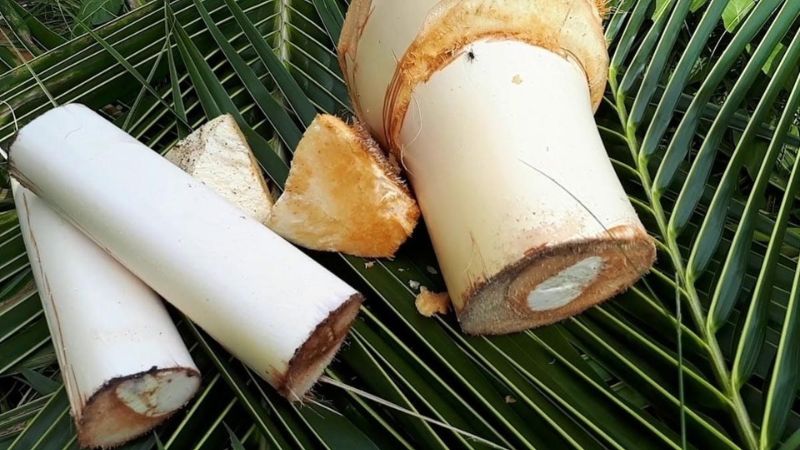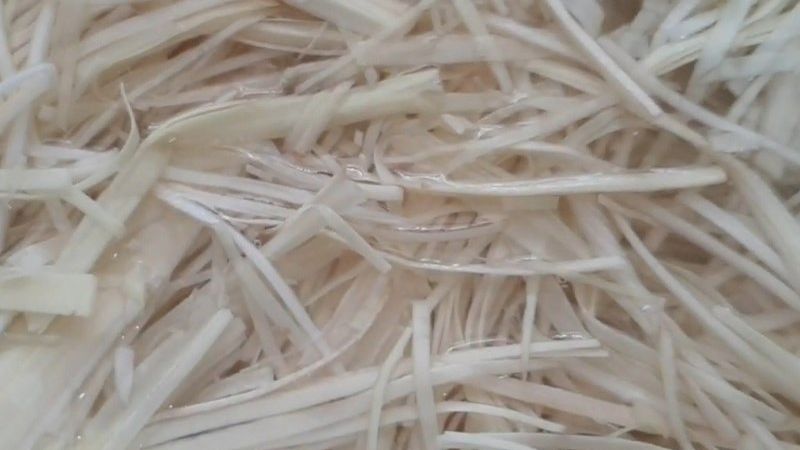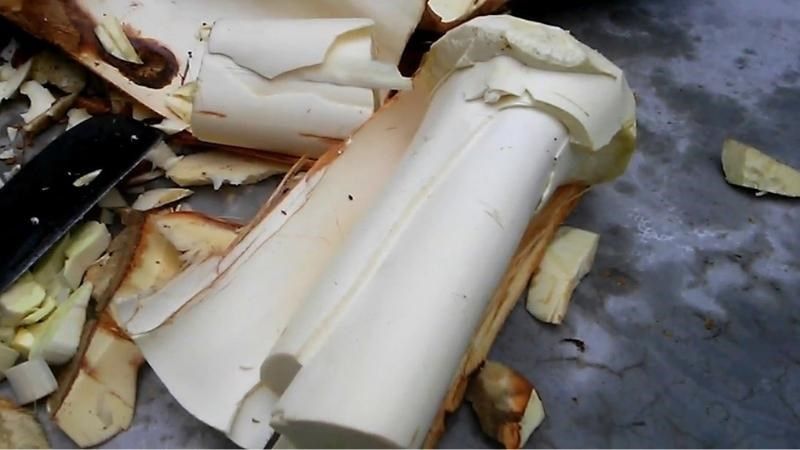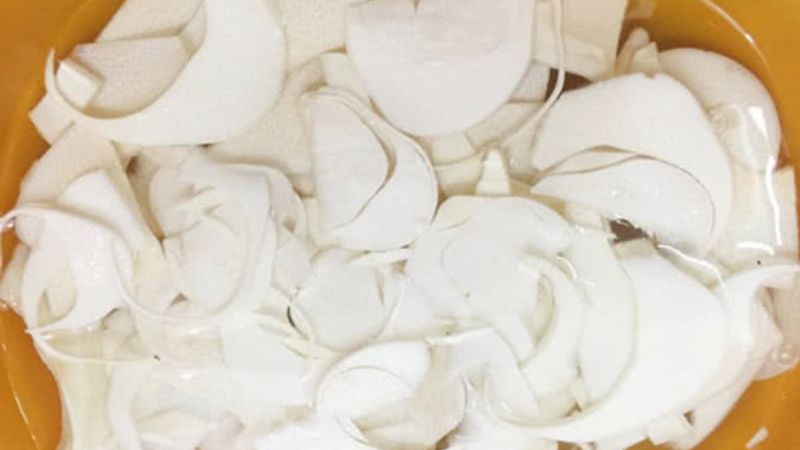is a rustic ingredient that can be processed into many delicious dishes such as shredded coconut salad with pig’s ears, coconut root stew, pickled coconut root… However, if you do not know how to process it properly, the coconut root can turn black and lose its taste. Here are some tips on how to prepare the coconut root without it turning black.
1 What is coconut root (coconut stem)?
Coconut root, also known as coconut shoots, coconut stem, or coconut sprout, is the non-mature part that is located on top of the coconut tree trunk.
When harvesting, people have to select mature coconut trees, then climb up to remove all the leaves, flowers, and coconuts from the trees before cutting the coconut shoots.
These coconut shoots are then separated from the outer fibrous layer to reveal the white inner part, which is called the coconut root. The coconut root is crispy and has a mild sweet taste. Before starting to cook, people usually cut the coconut root into pieces or thin slices, then soak them in salted ice water or lemon juice to prevent them from turning brown and maintain their crispiness for a longer time.
Depending on personal preference, the coconut root can be cooked into various dishes such as salad, stir-fry, dried, or sautéed, each dish bringing the distinctive flavor of the coconut root: crispy, sweet, and refreshing.
 Coconut root is the non-mature part that is located on top of the coconut tree trunk
Coconut root is the non-mature part that is located on top of the coconut tree trunk
2 How to prepare coconut root without it turning black
Coconut roots can easily turn brown during the cooking process, and here are some popular methods to solve this problem.
Soak in lemon water
One of the simple ways is to use lemon water. First, you cut the coconut root in half and then cut it into small pieces with a size of about 4 – 5 cm or thinly slice it. Then, soak them in a clean water basin and add prepared lemon juice, then soak the coconut root for about 15 minutes.
After 15 minutes, you can take out the coconut root and rinse it with cold water 2 – 3 times to remove excess lemon juice, then let it drain before cooking.
Besides, to increase the crispness, crunchiness, and whiteness of the coconut root, you can also soak them in ice water for an additional 10 minutes before using.
 Soak in lemon water
Soak in lemon water
Soak coconut root in sugar vinegar
Soaking coconut root in diluted vinegar and sugar water is another way to prevent the coconut root from turning brown. First, you prepare the vinegar-sugar mixture by mixing 150 ml of vinegar, 200g of sugar, and 2 liters of water in a basin.
Then, cut the coconut root into small pieces and soak them in the vinegar-sugar mixture. Use plastic wrap to cover the basin, then place it in the refrigerator for 2 – 4 hours.
The soaking process in the vinegar-sugar mixture not only enhances the aroma but also makes the coconut root crunchier. Moreover, the cold temperature in the refrigerator helps the coconut root stay crispy, making the dish even more refreshing. After soaking, you can take it out of the refrigerator and prepare it according to your preferences.
 Soak coconut root in sugar vinegar
Soak coconut root in sugar vinegar
Store coconut root at room temperature
If you have bought coconut root and not used it yet, you should keep the coconut root intact without washing it and store it in a clean, well-ventilated place.
 Store coconut root at room temperature
Store coconut root at room temperature
Store coconut root in the refrigerator
If you have a refrigerator, you can put the whole coconut root in a sealed bag and place it in the refrigerator’s vegetable compartment. With this method, the coconut root can stay fresh for 3 to 5 days. If you store it in the freezer compartment, it can be stored for up to 10 days.
 Store coconut root in the refrigerator
Store coconut root in the refrigerator
Soak in water
If you have cut the coconut root but haven’t used it immediately, you can soak the coconut root in a bowl of water. This method will help the coconut root stay moisturized and retain its crispness and sweetness.
 Soak in water
Soak in water
Now you know what coconut root is and how to prepare it without it turning black, as well as how to store coconut root. Hopefully, this article has provided you with useful information.

































